Last October the area immediately in front of the house was excavated to repair a rapidly widening sink hole.

One of FOUR decaying Douglas Fir stumps found 10 feet underground that were causing the ground to open up in front of the house
There used to be a large deck on the front of the house, which was in violation of county building codes, because the original builder constructed it directly over the top of a septic tank (yes, this is the same builder that buried the stumps that caused the sink hole — words fail me). We completely removed the deck to facilitate the sink hole repair last fall, and also to improve the view from the living room windows, as the deck railing obstructed the view.
The damage in the front yard from the sink hole was extensive, but once the ‘root cause’ was determined, it was actually a relatively easy repair. For a while it looked suspiciously as if we were attempting to install an olympic sized swimming pool between the house and the workshop, but once the area was back-filled with soil again, and compacted, we were left with a blank slate.
Although fall and winter is the best time to plant a native garden in this area, we chose to wait through the winter months to be sure that the ground was truly stable, as some minor settling after the rains was to be expected.
We’re happy to see the soils are no longer sinking in this area, and are now anxious to convert our moonscape in front of the house into something more aesthetically pleasing, and hopefully soon we can also re-pave the driveway.
As next week is California Native Plant Week, this seemed like a perfect excuse to get moving with formulating a plan!
With the deck gone, we were left with an empty 18×30 foot area between the driveway and the house. I can’t believe I’m showing you my weeds. As the deck can’t be replaced, and the area can’t be paved in order to preserve access to the septic tank, the only logical choice was to plant this area.
This project will be the first phase of the revamp of the entire front garden area. For this project we’re just focusing on the septic tank area for now, but we’ll tackle the leach field area later this year as well.
Planting this area, however, is not as straightforward as it may seem. Gardening in the vicinity of a septic system isn’t easy. The typical default solution for many is to plant lawn grass, as the roots from lawn grasses are shallow, and will not risk interfering with the function of the septic system. However, even lawn grasses aren’t always ideal for this application, especially if they require significant irrigation, as it’s important not to saturate the soils over the tank, or the leach field.
The idea of a slab of green grass directly in front of the house did absolutely nothing to inspire or motivate either one of us. Instead, we wanted to plant this area with a more diverse collection of plants, and bring some of the pollinators, and birds, closer into view of the house.
As we’d excavated 10-12 feet down to the right of the tank during the sink hole repair, we now know there are no pipes, or structures below grade in that half of the garden, which does provide us more flexibility in planting that area.
The left side however we have to consider both future tank access, and soil depth in that part of the garden.
This is a traditional concrete tank, with two access lids, both of which need to be accessible for maintenance. The soil depth in this area is approximately 16 inches down to the top of the tank.
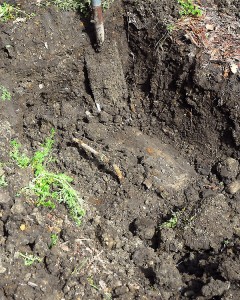
We excavated and located the tank lids, and then sketched out a map so we can find them in the future
While selecting plants to grow in this area we had to consider a few things:
- Root depth of any plants over or near the tank
- Deer resistance
- Drought tolerance
- Sun tolerance
- The need to move/remove plants for tank maintenance
- Preserving views from the windows
- Providing structure in the garden in the winter months
This garden area faces southwest, and gets lots of sun in the summer. It’s exposed to heavy deer browsing pressure, and situated immediately in front of the main living area windows.
Although we can’t see the ocean from here, we do have views of the surrounding woodland that we’d like to preserve, and not obscure, so ideally plants need be below 6 feet in height.
Due to the slope downward in front of the house, the house foundation is an exposed, relatively tall grey slab of concrete, and not particularly pleasing to look at. In the future we’d like to face the exposed concrete in stone, but for now we’d be content to obscure at least parts of it with plants.
So here’s the proposed plan thus far (always subject to change of course).

The rough plan for the new garden bed - grey area to the left is the location of the septic tank (click image to enlarge and read plant labels)
As this garden bed is quite large, for the area directly over the tank we’ve decided to try growing a few native deergrass (Muhlenbergia rigens). Growing to about 3ft x 3ft, the grass will provide some height, and movement, but most importantly, once established, it needs minimal irrigation, and its root depth should not exceed that of the soil over the tank.
Forward of the deer grass, as I have some growing in the greenhouse at the moment, we’ll plant some showy milkweed (Asclepias speciosa). This should help to guarantee at least a few butterflies will visit this part of the garden in summer.
Moving forward toward the driveway, some low growing native buckwheat (Eriogonum umbellatum ‘Shasta sulfur’) to provide a splash of yellow, and some additional pollinator-friendly blooms.
Because of the slope, the front edge of the garden is right at driveway level. We’ve decided to try using some tougher, low-growing, shallow-rooted woody perennials along this edge, clear of the tank. Ceanothus gloriosus ‘Heart’s Desire’ is a somewhat prickly low-growing groundcover Ceanthothus, and reportedly one of the more deer resistant (we’ll have to see if that’s true here).
The rest of the edge we’re trying the Arctostaphylos hybrid ‘Emerald Carpet’. The idea here is we’d like to grow a 12-18″ evergreen edge along the transition to the driveway. Both the Arctostaphylos, and Ceanothus, nectar laden blooms, should entice the bees in early spring.
For height, and color, two of my favorite native sages will be added, Salvia clevelandii ‘Pozo Blue’, and ‘Allen Chickering’.
Allen has proven to be a very robust, and prolific sage here, so I’m always happy to plant more, as it’s a carefree plant. These Salvias are also generally ignored by our deer, and will be very aromatic, especially after a rain.
Coyote mint (Monardella villosa) should help to extend the period of purple blooms in this part of the garden after the sages have faded.
However, these plants are usually pruned hard at the end of the season, and won’t provide any winter structure in this bed, so tucking it in front of the Ceanothus will hopefully prevent a ‘hole’ in the garden during the winter months. Its pollinator value, and deer resistance, make it worth reserving a space for though.
So far we’ve mostly planted Lavendula x intermedia ‘Provence’ in the gardens, both for its culinary value, and for future soap-making efforts. I love the unique look of Lavendula ‘Goodwin Creek Grey’ though. It has beautiful silvery foliage, and is a prolific bloomer.
This lavender is the only non-native plant currently on the plan for this bed, but I don’t mind augmenting a native garden with water-wise, well-behaved non-native plantings, especially if they help to extend bloom periods, and increase diversity in the garden.
The pollinators love it, the deer ignore it, and it will provide some foliage interest in the front of the bed. Oh, and the aroma is wonderful too!
The plant I think we’re taking the greatest gamble on in this part of the garden is Ceanothus ‘Wheeler Canyon’ in the back right corner of this bed. The deer may well be tempted to nibble on this variety, we’ll have to wait and see. Generally speaking, the larger-leaved Ceanothus are more likely to be sampled by the deer, including the Ceanothus thyrsiflorus that is endemic to the property.
Warty leaved varieties like ‘Dark Star’, or ‘Julia Phelps’, or the the prickly ‘Heart’s Desire’ tend to be more deer resistant. We’re hoping we can cheat a little, and with little else of interest to the deer in this bed, we hope they don’t notice these few hiding in the back, but if they do, we can always try planting something else.
We were looking for some substantial shrubs for this back corner, both to help obscure the foundation from the driveway, and to provide some height, but we didn’t want a variety of Ceanothus that would exceed much more than 6ft in height to preserve the views from the windows. This cultivar has rich blue-purple colored flowers, and typically grows 4-6 feet. The question is, will the deer notice?
The sticky monkeyflower (Mimulus aurantiacus) we’re also hoping will do well in this bed. It grows wild elsewhere on the property, and survives, with no supplemental irrigation up near the apiary.
The flowers are striking from a distance, although the shrubs themselves sometimes look a little ragged. We’re curious to see, with just a touch of occasional water, if they look better in a more cultivated section of native garden.
To make any pollinator friendly garden complete, we’ve also decided to add a water feature to this bed. We’ve chosen a pondless fountain, primarily because the raccoons tend to foul exposed water features here, and we don’t want to encourage that behavior.
We were limited on placement due to the position of the septic tank, but offset to the right of the bed, and far enough forward that we can see it from the bay window above, we hope this Sonoma Stone pondless fountain will prove to be a hit with both the birds and the bees.
Bees need water, especially during the summer months. As the water will lightly skim the surface of the rock, and the rock face is uneven, there should be plenty of areas for the bees to land to sip water. With no exposed deep water, it should also prevent the bees from accidentally drowning.
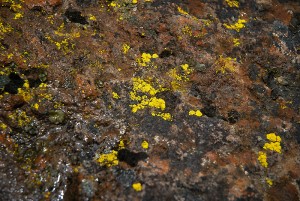
The colors in the rock, along with the lichens covering the surface, really stand out when the surface is wet
The base will be surrounded with Lodi stone, and extended into a gravel wash through the center of the garden bed.
The first truck load of soil was delivered yesterday morning, along with the components for the fountain, so this weekend we start planting!
Yesterday, I started by weeding this area, and then excavating down to locate both access hatches for the septic. The hatches were marked out, and we’ll randomly add some additional Sonoma field stones to balance out the fountain, and to help us locate the septic hatches in the future.
With the septic access located, the area was backfilled, and I’m now in the process of distributing the first load of top soil, no doubt with more to come.
As the rain began to move in last night, I started to position, and level, the 30 gallon basin that will sit under the fountain rock.
I was quickly rained out, but hopefully with the warm weather slated for the weekend, we’ll finish installing the fountain this weekend. Although I’m not looking forward to hoisting this enormous rock into position.
Connecting the pump might be tricky too!
However, I’m hoping that once we’re done we’ll transform our ragged patch of weeds in front of the house…
…into something we actually want to come home to! We’ll post our progress, soon…





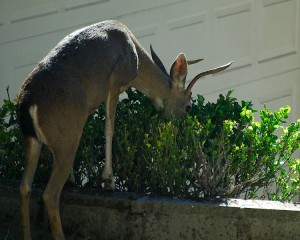
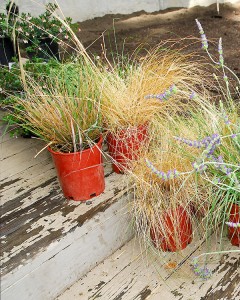


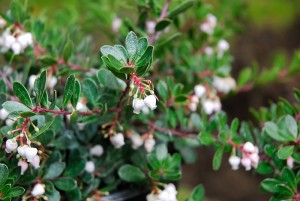
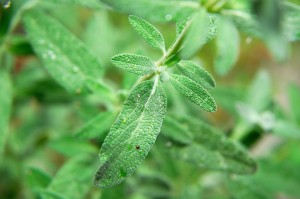
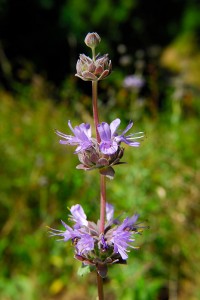
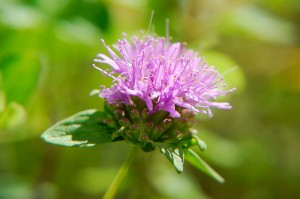
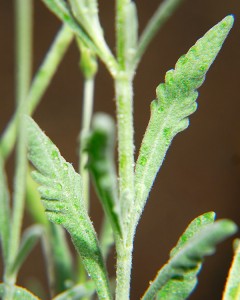
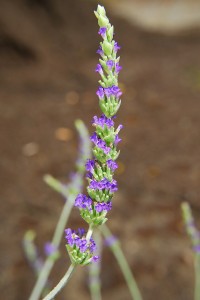
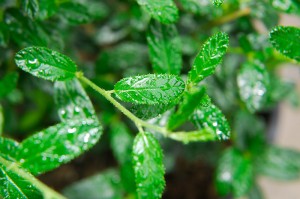

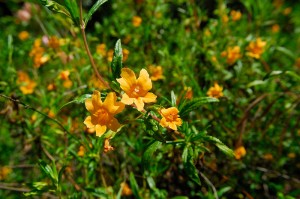

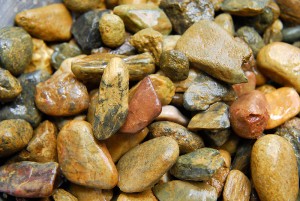
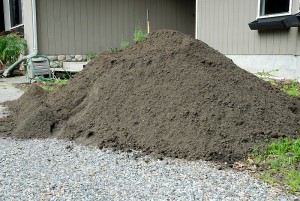


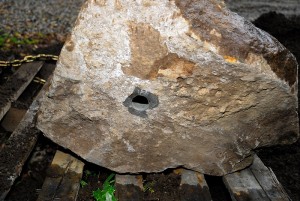
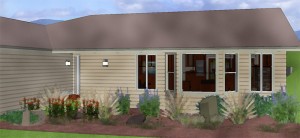







Since we don’t have a septic tank I had no idea what types of limits that would set. I love the grasses and can just imagine them blowing in the breeze. That stone fountain will look beautiful. Looking forward to seeing what you do there.
The greatest concern with septic systems is roots either breaking or entering the tank, or clogging the outflow pipes. As septic repairs are extremely costly, prevention is key. Trees and woody perennials are the greatest offenders, and the general consensus seems to be that annuals, grasses, and non-woody perennials are usually safe, but it still helps to know what type of root system plants have before planting. Plants also may behave differently in the presence of excess nutrients in a leach field area, so that has to be considered as well. The list of appropriate plants was already short because of the deer, but then considering water needs, and root systems, it quickly got a lot shorter, but there are choices other than turf grass, thankfully! 🙂
Looks like a good plan, Clare. You really have quite a bit of work ahead, but it will be very nice when you are through. The deer photo is a classic. They have nerve, don’t they.
It is a lot of work, but I hopefully when we’re done it will look much better than the oversized deck that used to be there, and it certainly will look better than bare dirt and weeds! That buck was bold, I couldn’t believe he stood on the wall to chew on the Euonymus!
Clare,
I can not think of any perennials that would interfere with a 16 inches under ground septic tank. We had mimosas growing into and around one of our lids, hard to get rid of because they root so deep. Our hellebore garden is over the septic field.
Question what did you do with the old deck? I moved a 10ft x 14ft deck built in 1985 into our woods, a great hang out place.
The bigger concern is the leach field. For directly over the tank my concern is that 16 inches of soil isn’t much for most woody perennials here, especially those with taproot systems. I also don’t want to dig out plants with root systems like that every 5-10 years for tank maintenance. The leach field will be a much bigger challenge to plant, but as we’d like to maintain some continuity throughout the garden, we wanted to consider that when choosing plants for this bed too. Before we plant out the leach area though we need to figure out first how deep our leach lines are. On some lots they’re only a few inches underground. I’m hoping ours aren’t that shallow.
As for the deck, it was approximately 30 years old, and in very sorry shape. Some of the lumber was salvaged for reuse, both here, and by our demolition contractor, but much of it was rotten.
The design looks great. I can’t wait to see how it turns out. Went back and read the sink hole saga and can’t believe how calm and rational you seemed to be reporting on it. I can’t imagine that was much fun to deal with.
As we learned the cause about 6 months before the final excavation, I think I’d had time to digest the magnitude of the problem 😉 Actually, honestly, I think we were just both relieved that it was something that was fixable. An underground spring, or geologic fissure, would have been a MUCH bigger problem to solve.
I like it!! I’m looking forward to following along.
Thanks Turling. Not as fancy as the design for your place, but I’m hoping it will be a vast improvement over what’s here now! 😉
Clare I adore your plan…I love all the native plants that are so foreign to me here…the idea of the pondless fountain solves lots of issues…your deer are as brazen as ours…I have said if I leave the door open to the house the critters would probably just walk on in…
We do have some very unique native plants to California. I so enjoy living here. I’m not sure I would have made so much of an effort to learn about our native flora if we’d lived anywhere else. We’re just so fortunate to have a lot of native plants that grow wild on the property, and it’s fun to bring in a few additional species too.
I agree, those darned deer would raid the refrigerator and commandeer the tv remote if you let them! 😛
It is amazing to me how you pre-plan everything that you do. This bed looks very well thought out. I can’t wait to see the reality. I think moss phlox, P. subulata, would work really well in it: native to eastern US, shallow-rooted groundcover, likes thin soil, full sun, wintergreen, multitudes of flowers in amazing colors. Just an idea.
Well, I don’t quite pre-plan everything I do, but sometimes I have to plan some projects in advance just to know what I’m getting myself into!
It’s actually rare for me to plan out a garden bed before I build it. Usually I buy some plants, and move the pots around an area until I like the arrangement. As this is the front of the house, that everyone will see, I felt I should maybe think about it first 😉 We’ll have to see how it turns out.
Love the plan! I’m not usually a fan of the the fountain rocks, but in this case I think it’s a great choice, and that’s a nice specimen. Can’t wait to see the results!
It’s funny, I’m not a fan of fountain rocks either. Two weeks ago I would have walked right by it. We liked the idea of a water feature, but wanted something that looked more natural. The more we thought about the bee’s need for water specifically, the more this rock made sense. When we first looked, we didn’t find anything we liked. Basalt or featherstone didn’t seem quite right for this area. As soon as I saw this Sonoma stone though (we have other Sonoma stone rocks scattered around here too), I said “that’s it, that’s the one!” I hope it will look how I envision it, but we’ll have to see!
Oh, that sounds like so much fun. I love planning a garden, it’s always so stunning in my imagination (and often not too bad, though completely different in reality)
So, about that Mulenbergia rigens: 3x3feet you say? How about 4×5? Or maybe 5×8? This is a grass that can get big. Maybe not so big where you are, but big. I’d suggest Festuca Californica instead, but it reseeds, so you might have to stick with the deer grass.
Regardless, have fun! What an exciting project (and how are the goats?)
Well, yes, that Muhlenbergia can get quite large, and secretly, I’m hoping it gets huge, especially on that left side of the bed. 😉 I originally was going to plant more of them on that side, but realized they look much better spaced out so you can really see their shape. There’s a vast expanse of blank wall there, so if they do get 5′ feet+ I’ll be thrilled! However, as I haven’t grown them here, I’m not sure yet how well they’ll like it here. If it gets too large in front of the ‘Pozo Blue’, I have considered planting Festuca idahoensis ‘Siskyou Blue’ there instead. Festuca californica though I do have seed for, as some of that may find its way into the leach field garden. I don’t mind growing grass, I just don’t want to mow it!
Now the rain has moved through, I’m hoping to do a goat update this week. They are growing almost as fast as our weeds! 😀
I remember when you posted about the stumps you found buried – INSANE! I’m sure you are glad to be finally done with the renovating and leveling! Your new garden plan sounds really pretty with all the purples and yellow but filled with some nice tough plants. Hopefully the deer will avoid!
I hope they leave the garden alone, although yesterday we had two bucks lurking in the garden checking out our progress. I hope they weren’t taking notes 😉
Planting over a septic system is always a bit tricky. But it sounds like you have a great plan all worked out. I can’t believe how aggressive the deer are! We have them here, but (so far) they stay away from the house by a few yards. How exciting to get to start planting – to me that’s the funnest part of gardening – and then waiting for your plan to turn into reality.
We managed to get the fountain rock installed yesterday, so I’m excited to start planting today. I agree, waiting to see if the garden transforms in to the same vision in one’s mind’s eye is the fun part!
I can’t wait to see how this all turns out – nothing better than a good piece of bare ground to get loose on! I miss projects like that and I regret never blogging much earlier as years ago I had lots of bare earth. Never thought of the consequences of growing near a septic tank before.
Truly bare ground has been scarce here. Our last garden was stripped bare, as the builders of the house scalped the lot during construction. I think it was much easier working with a blank canvas, than trying to garden in an existing space. It’s been challenging here, both figuring out what’s already growing, and what should stay, or go, but also how to garden here to work the best with what we’ve already got. I’d love to see what you started with before your beautiful garden matured. It’s always fun to look back and see how a garden has evolved.
Fantastic post. Thanks for sharing your thought processes. I learned a lot.
Thanks Mary. Glad you found it helpful.
How nice to get a new garden area in exchange for your deck. The plans look great, and I can’t wait to see what it looks like when it gets planted. I hope this project provides some pleasure to compensate a bit for the disaster created by your incompetent landscape crew. -Jean
Looking forward to seeing the end result. Looks promising! Crazy that the builder buried those stumps in the ground. I thought we only had “cowboy builders” in Ireland!
What an awesome plan, Claire! You’re going to have so much fun creating this new garden space. Your plant selections are well-thought out and should complement each other very well. Muhlenbergia rigens is one of my fav native grasses, with its impressive size and dramatic sculptural quality. A close second is ‘Canyon Prince’ Wild Rye (Leymus condensatus). I just started my own new garden project in a weedy patch along the fenceline adjacent to our neighbor’s corral that was recently cleared. I don’t have an exact plan formulated yet, but the theme will be “California mission-inspired.” I’m a huge fan of California’s missions (of their history, architecture and gardens) and would like to incorporate some of the garden elements and plant selections I’ve seen at the 6 (out of 21) missions I’ve visited so far. We’ll see how that goes. In the meantime, looking forward to seeing how your native plant garden progresses over the next few months. Happy planting!